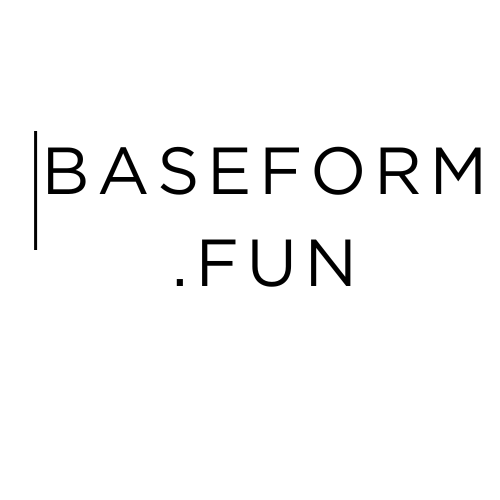When starting your journey into web development, one of the first questions you may encounter is: What is the difference between front-end and back-end development? These two terms refer to the two major aspects of web development, and understanding them is key to deciding which path you want to take in your programming career. In this article, we’ll dive into what front-end and back-end development are, why both are crucial for creating a fully functional website, and how you can become proficient in either (or both) of them.
What is Front-End Development?
Front-end development, also known as “client-side” development, refers to everything that users interact with directly on a website. It’s responsible for the look, feel, and behavior of the user interface. Simply put, front-end development is the design and structure that visitors see when they access a website.
Key Aspects of Front-End Development:
- HTML: The backbone of any webpage, HTML (HyperText Markup Language) defines the content and structure of a webpage. It determines elements like headings, paragraphs, images, and links.
- CSS: Cascading Style Sheets (CSS) is used to style the content that HTML creates. With CSS, front-end developers can change colors, fonts, margins, and layout to make a site more visually appealing.
- JavaScript: JavaScript is the programming language that brings interactivity to a website. From dropdown menus to image sliders, JavaScript allows developers to create dynamic elements that engage users.
In today’s web development, front-end developers often work with frameworks and libraries such as React, Angular, and Vue.js to streamline development and create complex user interfaces quickly.
What is Back-End Development?
Back-end development, also known as “server-side” development, deals with the part of the website users don’t see—the behind-the-scenes functionality that powers everything. Back-end developers build and maintain the systems that allow the website to operate, ensuring that everything works as expected. Without back-end development, a website would be static and lack any meaningful data interactions.
Key Aspects of Back-End Development:
- Server-Side Languages: Back-end developers typically use programming languages such as PHP, Python, Ruby, Java, or Node.js to create server-side applications that handle business logic and database interactions.
- Databases: Websites often need to store user data or other dynamic content. Back-end developers use databases like MySQL, PostgreSQL, or MongoDB to manage and organize this data. They also write queries to retrieve, update, or delete information stored in the database.
- APIs (Application Programming Interfaces): APIs allow the back end of a website to communicate with the front end. For example, a user submits a form on the front end, which sends a request to the back end, where the data is processed and saved to the database. The back end then sends a response to the front end to display the result to the user.
Back-end developers often work with frameworks such as Django, Flask, Rails, and Express to handle common tasks like routing, authentication, and session management more efficiently.
The Importance of Both Front-End and Back-End Development
While front-end and back-end development involve different skill sets and responsibilities, both are critical for creating a functioning website. The front end is what users see and interact with, while the back end ensures that everything runs smoothly and efficiently behind the scenes.
A well-designed front-end can attract visitors, keep them engaged, and provide an excellent user experience. On the other hand, a well-coded back end ensures the website’s functionality is robust, secure, and fast. A site’s back end powers complex operations, such as handling payments, saving user data, and delivering dynamic content based on user preferences.
Together, front-end and back-end development create the complete package needed for modern, interactive websites.
Full-Stack Development: Combining Front-End and Back-End
If you’re someone who enjoys working on both sides of development, becoming a full-stack developer could be the right choice. Full-stack developers are capable of building both the front-end and back-end of a website. They have the skills to handle everything from designing the user interface to managing databases and creating the server-side logic.
Becoming a full-stack developer requires mastering multiple languages, tools, and frameworks, but it also provides a broader skill set that can make you more versatile in the job market. Many full-stack developers choose to specialize in one area (either front-end or back-end) while maintaining a general understanding of the other.
Which Path Should You Choose: Front-End, Back-End, or Full-Stack?
The decision of whether to specialize in front-end, back-end, or full-stack development largely depends on your interests and career goals. Here are some factors to consider:
- Front-End Development: If you enjoy creating visually appealing websites, designing user interfaces, and working on interactive elements, front-end development may be the perfect fit for you. It requires a good sense of design and user experience, as well as knowledge of web technologies like HTML, CSS, and JavaScript.
- Back-End Development: If you enjoy working with databases, solving complex problems, and building systems that power websites, back-end development could be your ideal path. It’s a more technical field that requires knowledge of server-side languages, APIs, and databases.
- Full-Stack Development: If you want to be able to work on both front-end and back-end development, full-stack development might be the right choice. Full-stack developers are in high demand because they can handle all aspects of web development, making them incredibly versatile and valuable to employers.
Conclusion: Both Are Essential for Success
While front-end and back-end development focus on different aspects of a website, they are equally important. The front end creates an engaging user experience, while the back end ensures that the website runs smoothly and efficiently. Whether you choose to specialize in one or become a full-stack developer, mastering these skills will open up many opportunities in the ever-growing field of web development.
At baseform.fun, we offer comprehensive courses for both front-end and back-end development. Whether you’re just starting or looking to expand your skills, we have the resources to help you succeed in the world of web development.

